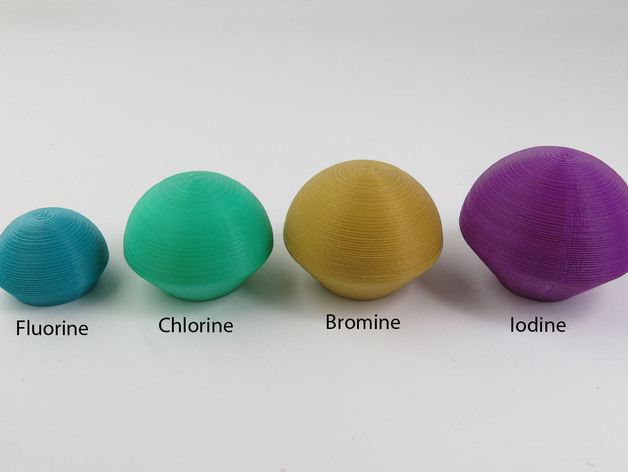
Space-filling molecular models: Halogen expansion set
thingiverse
The halogens are one of the top reasons to use space-filling models. With ball-and-stick models and writing structures on paper, you can easily convince yourself that all the atoms are roughly the same size. However, most of the halogens don't fit this pattern at all. They're several times larger than carbon or nitrogen. This might be expected since they're further down the periodic table, but it's still surprising just how much bigger they are. "Are they really as weird-shaped as they seem?" I hear you ask. Probably not; we don't know exactly what they look like. They're probably more spherical, but they can crowd nearby atoms so some allowances are made. "I thought one of the points of space-filling models was to tell when things get too close together." That's true, but they don't crowd other atoms that much, and atomic orbitals seem to be more flexible than ABS. It would be interesting to try using flexible filament. Bromine is traditionally brown, but I didn't have any brown filament, and I think I like it in gold. See the starter set, carbon expansion set, nitrogen expansion set, aromatic expansion set, and the sulfur and phosphorous expansion set for more useful elements. Printer Settings: Da Vinci 1A, no rafts, doesn't matter about supports, 0.2 mm resolution, infill at 5% or 10% for fluorine, three perimeters work well.
With this file you will be able to print Space-filling molecular models: Halogen expansion set with your 3D printer. Click on the button and save the file on your computer to work, edit or customize your design. You can also find more 3D designs for printers on Space-filling molecular models: Halogen expansion set.
